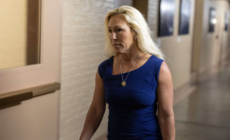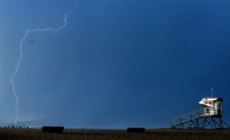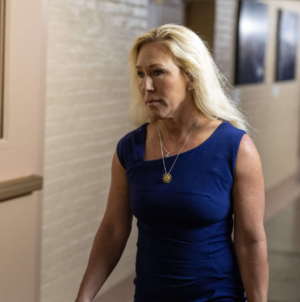-
Marjorie Taylor Greene Partially Agrees With Elon Musk on Trump-Backed Bill - 13 mins ago
-
Search relaunched for Madeleine McCann who disappeared in 2007 - 26 mins ago
-
Two children injured in Inglewood after suspect flees police and crashes, authorities say - 42 mins ago
-
Rockies vs. Marlins Highlights | MLB on FOX - 44 mins ago
-
Micah Parsons Finally Clears the Air - 52 mins ago
-
California Senate passes bill that aims to make AI chatbots safer - about 1 hour ago
-
New York Knicks part ways with Tom Thibodeau — Right call or big mistake? | Speak - about 1 hour ago
-
How to Watch The Ultimate Fighter: Live Stream Team Cormier vs Team Sonnen Episode 2, TV Channel - 2 hours ago
-
Thunderstorms sweep across SoCal, bringing dangerous dry lightning - 2 hours ago
-
Ukraine says it struck a critical Russian bridge with explosives - 2 hours ago
Trump U.S. Tariff Guide: Which Ones Are Paused, Which Are Still In Effect?
President Donald Trump capped off a week of global market turmoil after he abruptly reversed course on his plan to impose steep “reciprocal” tariffs on dozens of countries, including America’s most prominent allies and trading partners.
The president announced on Wednesday that he would pause reciprocal tariffs on most countries for 90 days while the U.S. negotiates with 75 countries that Trump said reached out to nail down new trade agreements in efforts to stave off tariffs.
Which Tariffs Are Still in Effect?
Based on Trump’s announcement and a fact sheet the White House put out after the fact, the following tariffs will remain in effect:
- A baseline 10 percent across-the-board tariff on imports that went into effect on April 5.
- Sectoral 25 percent tariffs on steel, aluminum and auto imports that kicked in on April 2.
- Canada and Mexico will continue facing a 25 percent tariff for all goods not covered by the United States-Mexico-Canada Agreement, which Trump negotiated during his first term.
Which Tariffs Will Increase?
U.S. penalties on China will increase to a whopping 125 percent amid escalating trade tensions between the two economic superpowers.
The triple-digit tariff on Beijing means American consumers will be forced to pay higher prices for a slew of goods and the market will continue facing lingering uncertainty until investors have a better idea of where trade relations between the U.S. and China stand.
Which Tariffs Are Paused?
Steep “reciprocal” tariffs that Trump announced last week against dozens of countries, with rates from 11 percent to 50 percent, are paused.
These countries will instead be subject to the baseline 10 percent rate, though Trump did not clarify which trading partners he was referring to when he announced his 90-day pause on Wednesday.
The White House also confirmed that it will reduce its initial 20 percent tariff against the European Union (EU) to 10 percent. That move came after the EU announced earlier Wednesday that it had approved a 25 percent retaliatory tariff against the U.S.
It wasn’t immediately clear if the bloc would back down on that threat after the U.S. announced its EU rate reduction.
AP Illustration/Jenni Sohn
Trump, meanwhile, said Wednesday that he decided to pause most reciprocal tariffs after he saw that people were “getting yippy” and “queasy” over Wall Street’s turbulence as investors braced for the potentially devastating impact of a global trade war.
“Well, I thought that people were jumping a little bit out of line,” the president said when a reporter asked him Wednesday to elaborate on his decision to back down on tariffs.
“They were getting yippy, you know, they were getting a little bit yippy, a little bit afraid … because we have a big job to do,” Trump said.
“No other president would have done what I did … and it had to be done,” he added. “But somebody had to do it … because it was not sustainable.”
Trump also said that he made his decision after seeing JPMorgan Chase chief executive Jamie Dimon’s prediction that a recession would be the “likely outcome” of the tariffs.
The president’s announcement also came just hours after he urged Americans to “be cool” and told them it was a “great time to buy” into the market. It wasn’t immediately clear if he had made his decision to implement the pause when he made the suggestion on Truth Social.
Wall Street rallied after Trump announced the 90-day pause; the tech-heavy Nasdaq composite had its best day in nearly 25 years, while the S&P 500 surged more than 9 percent in its biggest one-day gain since 2008. The Dow Jones Industrial Average spiked 7.87 percent, its biggest increase since March 2020.
Economists and analysts warned, however, that the market will likely see continued uncertainty as the Trump administration seeks to negotiate with 75 countries over the next three months without any clarity on what will happen after the pause is lifted.
“Markets are relieved a bit, but I don’t know how you could possibly think the U.S. is a sound, safe and stable place to invest when the president is flipping tariffs on and off like a light switch and there could be more of these things in a mere 90 days,” Scott Lincicome, vice president of general economics at the Cato Institute, told CNN. “So a bit of a reprieve, but we’re definitely not out of the woods.”
Adam Crisafulli, founder of Vital Knowledge, echoed that view, telling CNBC after markets closed that the 90-day pause “certainly removes a giant overhang from the market.”
“But tariffs are not going away,” he added. “China’s tariff rate is now in triple-digit territory, and who knows what happens in 90 days when this pause concludes.”
Trump administration officials, meanwhile, praised the president’s decision-making despite insisting over the last several days that he would not budge on his tariff policy.
“Many of you in the media have clearly missed the art of the deal,” White House press secretary Karoline Leavitt told reporters, referring to Trump’s bestselling book.
Source link































